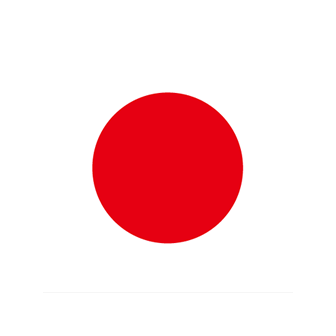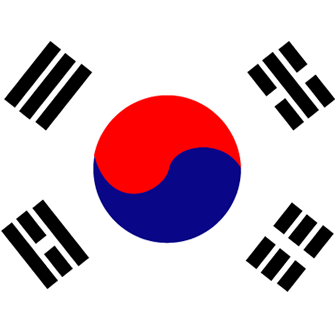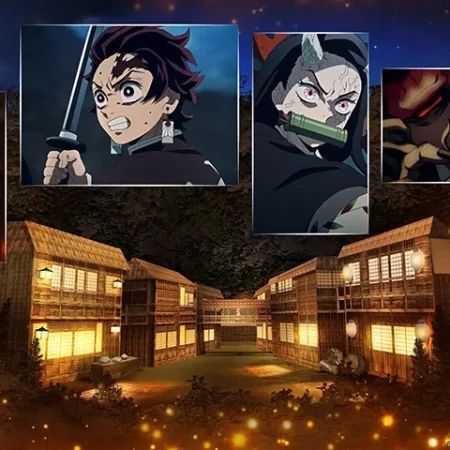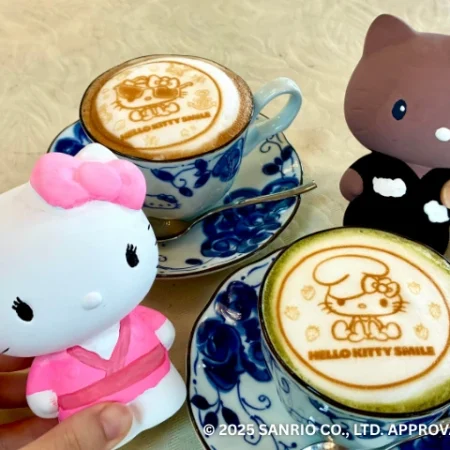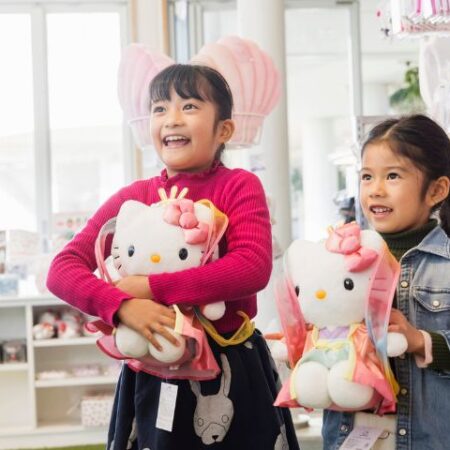People from all over the world come to see the complex known as Yumebutai (“the Stage of Dreams”). Designed by renowned architect Tadao Ando as part of a project to celebrate nature, Awaji Yumebutai holds a host of wonders. Featuring Ando’s architectural trademark of exposed concrete, the harmony of the structure with the surrounding natural beauty has made it a popular sightseeing spot.

Table of Contents
Designed by Tadao Ando

Tadao Ando (安藤忠雄) is a renowned Japanese architect known for his minimalist, modernist architectural style. Born on September 13, 1941, in Osaka, Japan, Ando was initially a professional boxer who taught himself architecture. His early exposure to the field was through travel and reading, rather than formal architectural education.
In 1995, Ando was awarded the Pritzker Architecture Prize, considered the most prestigious award in architecture. His work extends beyond Japan, with projects around the world, including the United States, Europe, and Asia.
Notable works include Yumebutai on Awaji Island, the Pulitzer Museum, Church of Light in Osaka and the Chichu Art Museum on Naoshima Art Island.
Distinctive style of Ando architecture
Tadao Ando is famous for his mastery of minimalism, innovative use of concrete, and deep appreciation for natural light. His architecture is characterized by clean lines, geometric shapes, and a harmony with the surrounding environment.
Concrete is a signature element in Ando’s work. His ability to manipulate and mold the material creates structures that are both powerful and serene. Concrete opens possibilities to fashion textured surfaces and strategically placed openings for natural light.
Huge landscape on Awaji Island
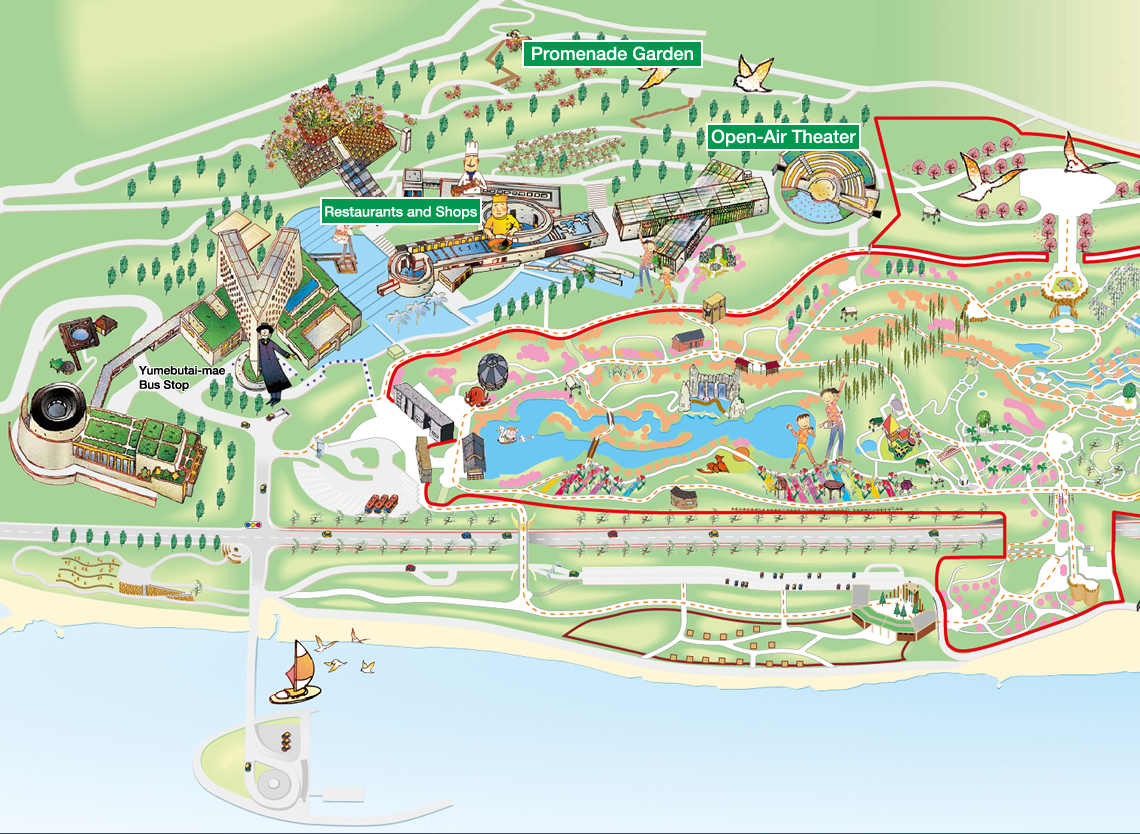
Awaji Yumebutai is a unique complex on Awaji Island in Japan. Its construction was completed in the year 2000 and includes a hotel, conference center, and landscaped gardens.
Tadao Ando’s seamless integration of architecture with Awaji’s exceptional natural environment is breathtaking. The concrete structure showcases Ando’s skill in creating spaces that are not only functional but also inspiring.



Yumebutai holds several attractions within its sprawling expanse, enough to fill an entire day walking amidst the concrete maze, getting lost and then finding something new in places already visited.
In addition to the Sea and Mountain corridors, the main building has the Ellipse and Circular forum, Sky and Water garden and outdoor theater. Wander and wonder in the endless concrete pathways.
Hyakudan-en Garden
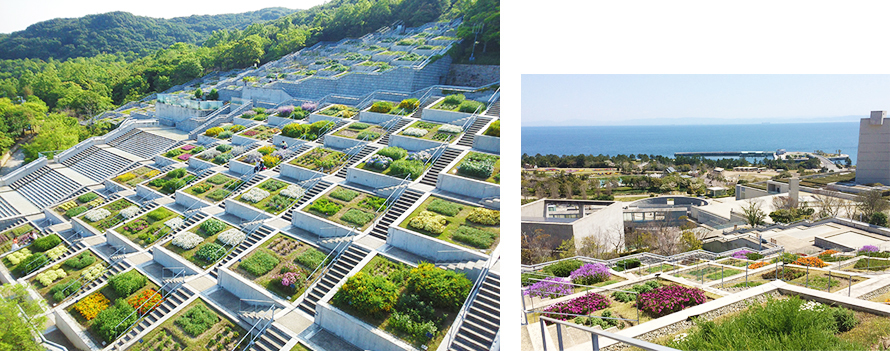
One of the most distinct features of Yumebutai is the Hyakudan-en, a series of 100 stepped terraces that cascade down the hillside. Each terrace is planted with a different variety of plants and flowers, creating a stunning landscape.
Hotel Grand Nikko Awaji

The Hotel Grand Nikko Awaji is part of the Yumebutai complex, ideal accommodation for those planning longer trips on Awaji Island. For other luxury hotels please check our article on the top resort hotels on Awaji Island.
International Conference Center
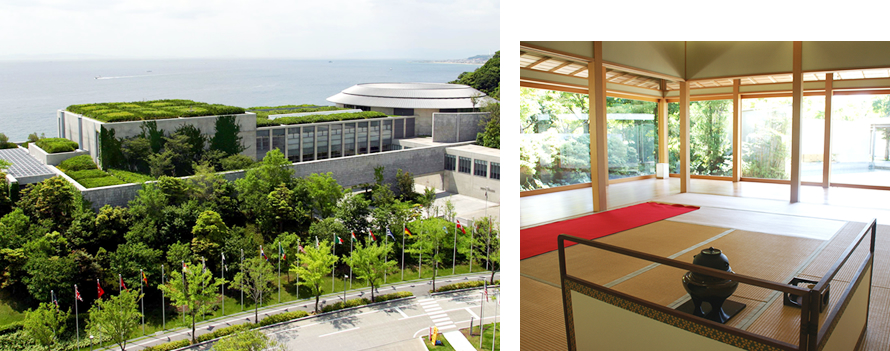
The international conference center is popular worldwide for various events. The design of the center reflects Ando’s modernist approach, with clean lines and a focus on spatial functionality.
Awaji Greenhouse

Awaji Greenhouse, although located within Yumebutai, was not designed by Ando. This botanical garden is well worth the 750 yen entrance fee. Opening hours are from 10 am. to 6 pm. Make sure to visit before it closes for major repairs from April 2024 to mid-March 2025.
Closing
Tourists from far and wide come to see this amazing masterpiece. Awaji Yumebutai is not only an architectural marvel but also a reminder that buildings can live in harmony with nature.
